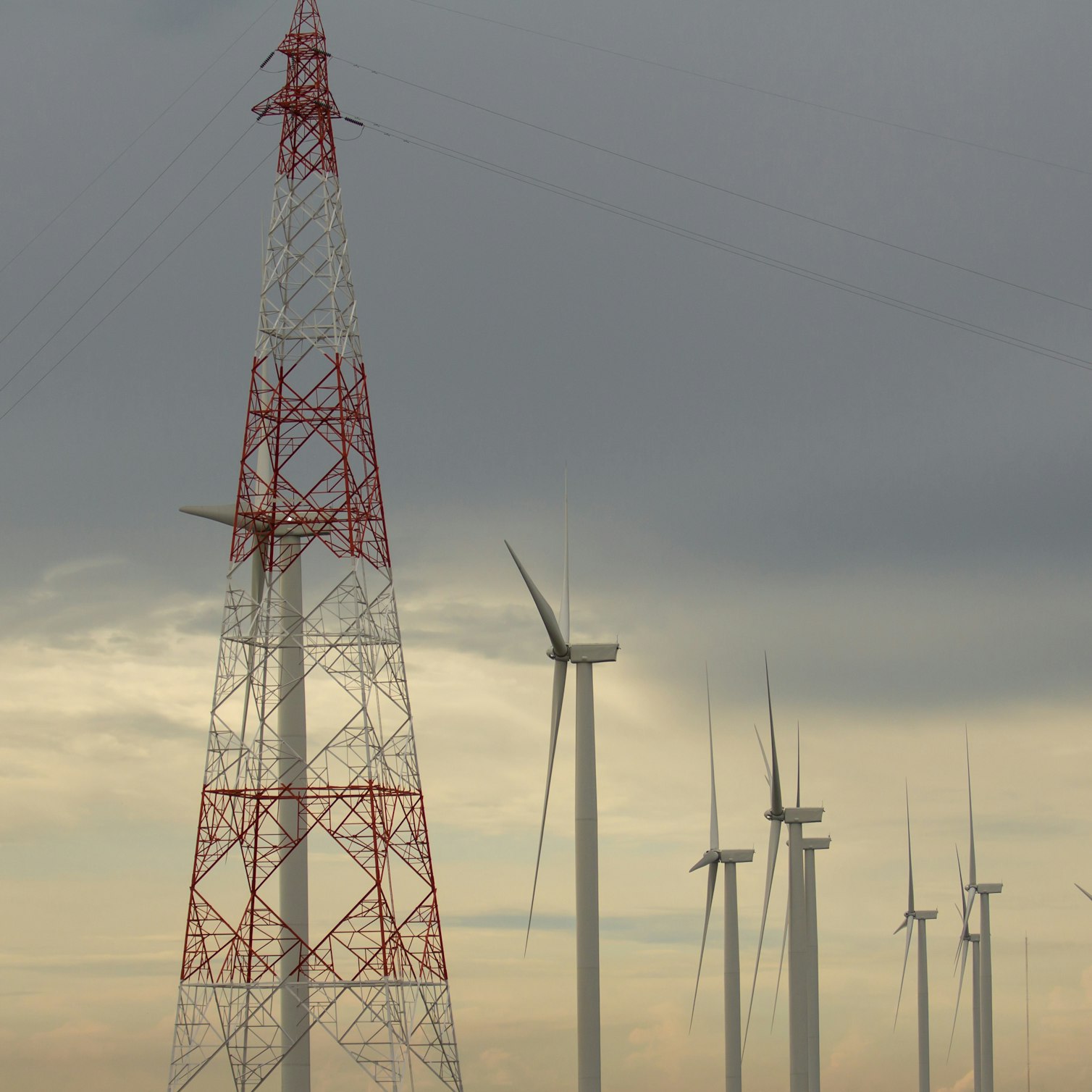- Solar energy blog
- UK interconnection delays: unlocking deployment of renewable energy
UK interconnection delays: unlocking deployment of renewable energy
Learn more about how UK interconnection delays are slowing down renewable growth and what solutions are being put in place to mitigate its effects.


Gonzalo de Blas
Territory Manager UK&I and China
Multilingual business development professional with an international background. Motivated and looking to do my bit in making the world more sustainable.

Content
The UK has set ambitious climate goals, including reaching net zero carbon emissions by 2050. A primary part of this transition will be rapidly scaling up renewable energy sources like solar power.
However, the UK has experienced some of the lengthiest interconnection delays in Europe, which could hamper the growth of renewables. In this blog, we’ll take a look at the causes of UK interconnection delays and what officials are doing to speed up the process.
What is interconnection?
Interconnection refers to the process of connecting distributed energy sources like solar, wind or battery storage to the power grid.
When a home, business, or solar PV provider installs solar panels, the energy produced needs to be able to flow into the local distribution grid to be used. Doing so requires not only the correct electrical equipment but also permission from the local utility company to connect to their lines.
Interconnection standards, procedures, and regulations are paramount to ensure the smooth integration of solar energy into the grid. Streamlined application processes and interconnection standards reduce consumer costs, promoting wider adoption of solar power.
Slow or complex interconnection approval procedures can create a bottleneck for distributed renewable energy. That’s why improvements to interconnection policies are being made in many regions to accelerate the growth of rooftop solar and other distributed energy resources.
Benefits of smooth interconnection
Increased solar reliance
Smooth and streamlined interconnection policies provide significant benefits for the growth of distributed solar energy. By reducing delays, costs, and complexity, improved interconnections enable wider adoption of solar across homes and businesses, as well as power from utility-scale installations. Customers are more likely to install solar when the application and approval process is simple and fast.
Better planning
Well-designed interconnection procedures allow utility companies to anticipate and manage the influx of distributed renewables on the electric grid. With clear visibility into upcoming solar projects, utilities can proactively plan grid upgrades and dispatch. It helps maintain reliability and integration as solar penetration rises.
Clearer legislation
Faster interconnections support policy goals for clean energy and emissions reductions.

The UK’s interconnection problem
The UK faces substantial obstacles connecting new renewable energy projects to the grid.
Many solar farms and warehouse roof-mounted systems face waits of 10-15 years to secure grid connections. These delays create a barrier to growing solar capacity despite the UK’s goal to quintuple solar power to 70 GW by 2035. Currently, there is only about 15 GW of grid connection capacity available.
The long wait times are causing a ripple effect, blocking future renewable projects from moving forward. Furthermore, the pipeline of contracted projects waiting for connections across England and Wales has ballooned to a combined 176 GW.
Critics have specifically pointed the finger at the energy networks like National Grid, regulator Ofgem, and speculative “zombie projects” holding connection queue spots but never getting built. Energy experts also complained that fossil fuel projects like LNG terminals are gaining quicker connections than renewables.
National Grid has faced backlash for the lengthy queues and delays. However, the company counters that anticipatory investments are needed to expand capacity rather than waiting for connection agreements.
Similarly, Ofgem, in response to criticism, is claiming to have removed barriers to anticipatory grid upgrades. The regulator is pushing a new invest and connect model to accelerate projects.
Octopus Energy has a 2036 grid connection date for a proposed Durham solar farm and energy storage facility. The company’s CEO labeled the multi-year waits “astonishing,” especially compared to the expedited approvals given to new LNG import terminals.
Possible solutions
The UK must find ways to accelerate interconnections to support net-zero goals. The current trajectory of delays stretching to the 2030s is detrimental to growth in low-carbon energy. There are 220 projects awaiting connection to the grid by 2026 with only half of these having the required planning permission and some start dates being pushed back by up to 14 years.
Many experts agree that the lengthy connection delays are unacceptable for cheaper and cleaner technologies like solar versus fossil fuel projects, and this slow pace threatens the UK’s green energy transition.
Octopus pointed to potential solutions like allowing competitive private connections to the grid rather than relying solely on the National Grid. Other fixes could include pre-permitted zones for faster renewable project approvals, anticipatory grid investments, and stricter project viability rules.
There is no single culprit; all parties share responsibility for fixing the situation.

What is the UK doing?
The UK is taking steps to address the severe grid connection delays hampering renewable energy growth.
In 2023, the UK government assembled a Solar Taskforce, made up of influential leaders from the public sector, private industry, and institutional finance, to accelerate the green transition and refine renewable policy and regulations. The taskforce is scheduled to work together until February 2024 and has three key objectives: build a strategic roadmap, unlock deployment, and secure investment. If you want to delve deeper into the Solar Taskforce and what it hopes to achieve, check out our blog.
The National Grid has also urged renewable developers to accelerate viable projects or forfeit their place in the connection queue. This pressure aims to clear out speculative zombie projects blocking shovel-ready developments. The energy leader has now enlisted a law firm to help accelerate this process.
Additionally, National Grid is collaborating with regulator Ofgem to reform rules around developer-build grid connections. Renewable energy companies can construct connections, but complex regulations make this difficult. Changes to enable more private-sector connections could help unblock bottlenecks.
The UK also set a target to double interconnection capacity from 10 GW to 20 GW by 2030. New links are in the works with Germany, Denmark, and an additional connection to France. Upgrades across transmission and distribution grids are also in progress.
While challenges remain, the UK seems more proactive with interconnection issues. Alleviating delays will be crucial for growth in renewables and reaching national climate change commitments.
Latest stories
Related posts
Market analysis
Power where it’s needed: Solving LatAm’s grid instability with distributed solar and storage
Find out how a bottom-up approach is solving LatAm’s grid instability, with community-led solar and storage projects giving people control over their energy.
Updated 29 DEC, 25

Market analysis
Powering through the peak: Why solar + storage is gaining momentum in MENAT
Discover how MENAT is building a functioning solar economy and why rising peak demand during extreme heat is squeezing its energy architecture.
Updated 11 DEC, 25


Market analysis
The rise of utility-scale PV + storage plants in Italy
Discover how Italy’s latest policies and auctions are driving utility-scale solar and battery storage projects to meet ambitious 2030 targets.
Updated 4 DEC, 25

- RatedPower
- Solar energy blog
- UK interconnection delays: unlocking deployment of renewable energy
 Watch a demo
Watch a demo Ask our AI Product Expert
Ask our AI Product Expert


